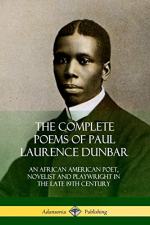|
This section contains 341 words (approx. 1 page at 400 words per page) |

|
We Wear the Mask Summary & Study Guide Description
We Wear the Mask Summary & Study Guide includes comprehensive information and analysis to help you understand the book. This study guide contains the following sections:
This detailed literature summary also contains Quotes and a Free Quiz on We Wear the Mask by Paul Laurence Dunbar.
The following version of this poem was used to create this guide: Dunbar, Paul Laurence. “We Wear the Mask” Poetry Foundation. https://www.poetryfoundation.org/poems/44203/we-wear-the-mask.
Note that all parenthetical citations within the guide refer to the lines of the poem from which the quotations are taken.
“We Wear the Mask” is a three-stanza poem by African American poet Paul Laurence Dunbar. Born during Reconstruction era America to parents that had been enslaved prior to the end of the Civil War, Dunbar was a prolific writer of poetry since his high school days and eventually became internationally renowned. His most famous poems are known for the use of African American vernacular, but recent scholarship has been interested in the poems he wrote using other dialects, such as Midwest regional dialect, and conventional English. During his lifetime, Dunbar published two volumes of poetry: Lyrics of Lowly Life and his 1895 Majors and Minors, which included “We Wear the Mask.” “We Wear the Mask,” which Dunbar did not write in the African American vernacular for which he is famously known, is an intimate exploration of the psychological effects of existing in a black body in a world that discriminates against Black people. Dunbar’s poem refers to the experience of “double consciousness,” a term later coined by W.E.B. Du Bois in his 1903 The Souls of Black Folk that describes how Black Americans internalized a discriminatory perspective of themselves initially imposed on them by the external experience of racism.
Dunbar's first-person plural speakers metaphorically describe this idea of double consciousness within the first line of his poem as wearing a “mask,” the experience of putting on a false face in response to discriminatory treatment. Throughout the poem, the speakers’ attitude towards the act of putting on a mask shifts – at first they consider it with pained acceptance as a necessary hard fact of life, then they characterize it as a purposeful form of trickery, and finally they lament over how it limits genuine expression in a discriminatory society.
Read more from the Study Guide
|
This section contains 341 words (approx. 1 page at 400 words per page) |

|



